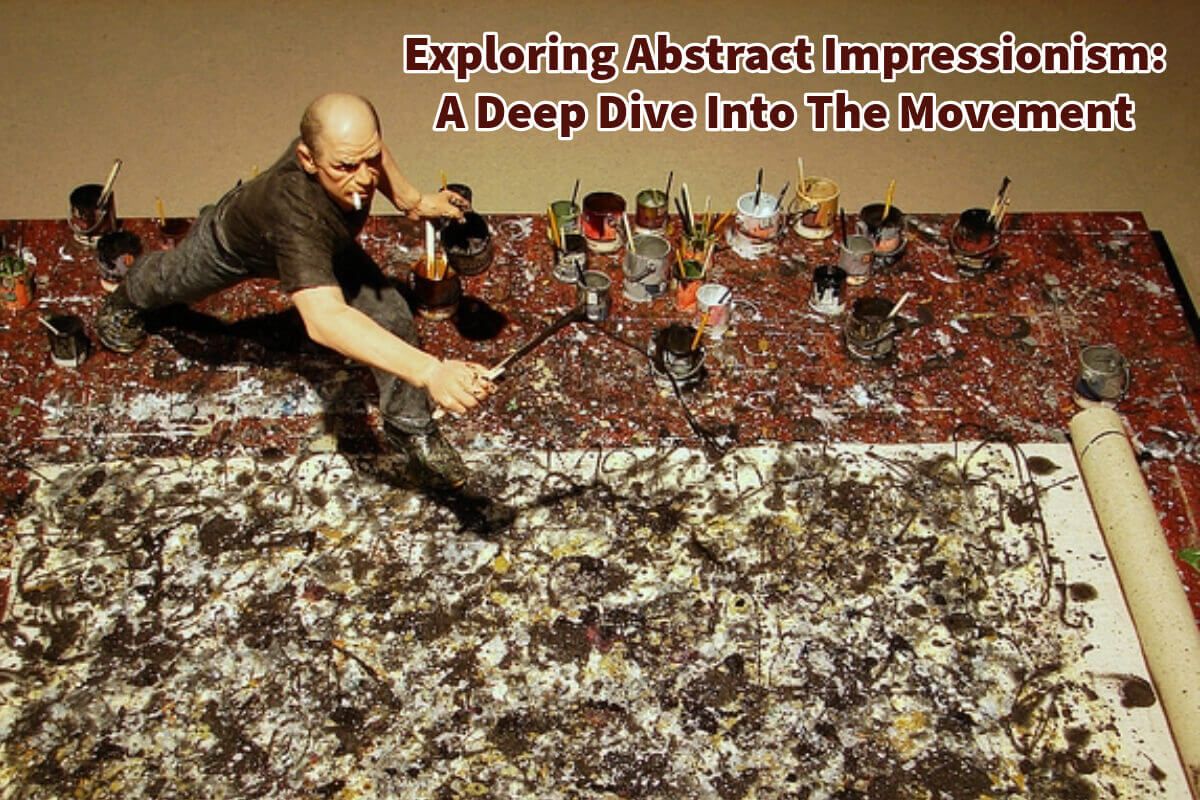Abstract Impressionism marks a significant shift in the art world, geographically and stylistically. After World War II, the center of the art world moved from Europe to America, mainly to New York.
This change was fueled by the influx of European artists and intellectuals fleeing the war and the burgeoning cultural and economic power of the United States. As a result, Abstract Impressionism emerged primarily as an American movement, growing out of the vibrant and dynamic art scene in New York City.
Table of Contents
- Abstract Impressionism: A Deep Dive into the American Art Movement
- Significance of Abstract Impressionism
- Ten Important Works of Abstract Impressionism
- “No. 5, 1948” by Jackson Pollock (1948)
- “Elegy to the Spanish Republic No. 110” by Robert Motherwell (1971)
- “White Center (Yellow, Pink, and Lavender on Rose)” by Mark Rothko (1950)
- “Mountains and Sea” by Helen Frankenthaler (1952)
- “Blue Poles” by Jackson Pollock (1952)
- “Leda and the Swan” by Cy Twombly (1962)
- “Onement I” by Barnett Newman (1948)
- “The Bay” by Helen Frankenthaler (1963)
- “Vir heroicus sublimis” by Barnett Newman (1950-1951)
- “Yellow Band” by Morris Louis (1961)
- Listen To Our Podcast About How Did Abstract Impressionism Redefine the Art World? Below or By clicking here.
- Related Questions
Abstract Impressionism: A Deep Dive into the American Art Movement
This movement represents a pivotal change in art, moving away from the figurative and narrative forms that dominated previous eras. Abstract Impressionism focuses on personal expression, spontaneity, and the emotional impact of color and form.
It is also a movement that started in America and marked a change from other art movements. After World War II, New York became the center of the art world.
Abstract Impressionism prioritizes the artist’s individual vision and the sensory experience of the viewer. It laid the groundwork for subsequent abstract art movements and significantly influenced the development of contemporary art.
Abstract Impressionism, a notable art movement that emerged in the mid-20th century, is celebrated for its unique approach to color, form, and emotion. Originating in the 1940s and 1950s, Abstract Impressionism is often seen as a bridge between the earlier movement of Abstract Expressionism and the more fluid and spontaneous techniques that characterized later abstract art.
This movement is significant for its departure from strict representational forms, allowing artists to explore more personal, subjective expressions through their work.
The Era of Abstract Impressionism
Abstract Impressionism developed primarily in the United States during the 1940s and 1950s. It was influenced by the earlier Abstract Expressionist movement, which sought to convey profound emotional or psychological states through non-representational forms.
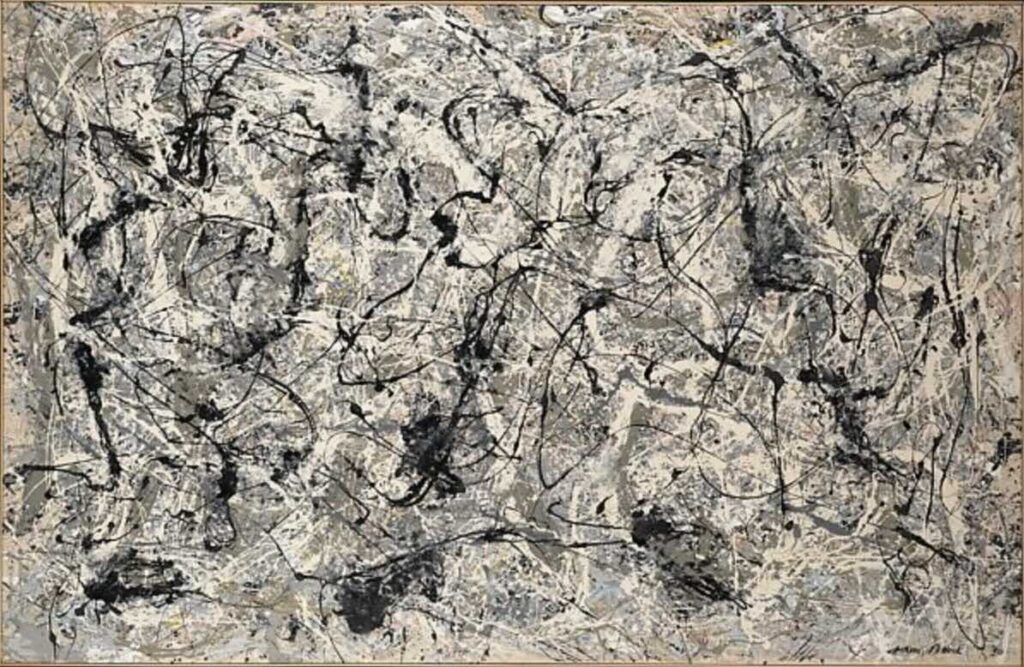
However, Abstract Impressionism introduced a more nuanced, softer approach, focusing on the interaction of light and color to evoke mood and atmosphere.
Significant social, political, and cultural changes, including the aftermath of World War II and the onset of the Cold War, marked this period. These events influenced artists to seek new ways of expression, moving away from traditional forms and narratives to embrace abstraction and exploring inner experiences and perceptions.
Significance of Abstract Impressionism
Abstract Impressionism is significant in art history due to its innovative use of color and form to convey emotion and atmosphere. Unlike earlier movements that focused on representational accuracy,
Abstract Impressionism prioritized the artist’s vision and the viewer’s sensory experience. This movement opened new avenues for artistic exploration, paving the way for future abstract art movements and significantly influencing contemporary art.
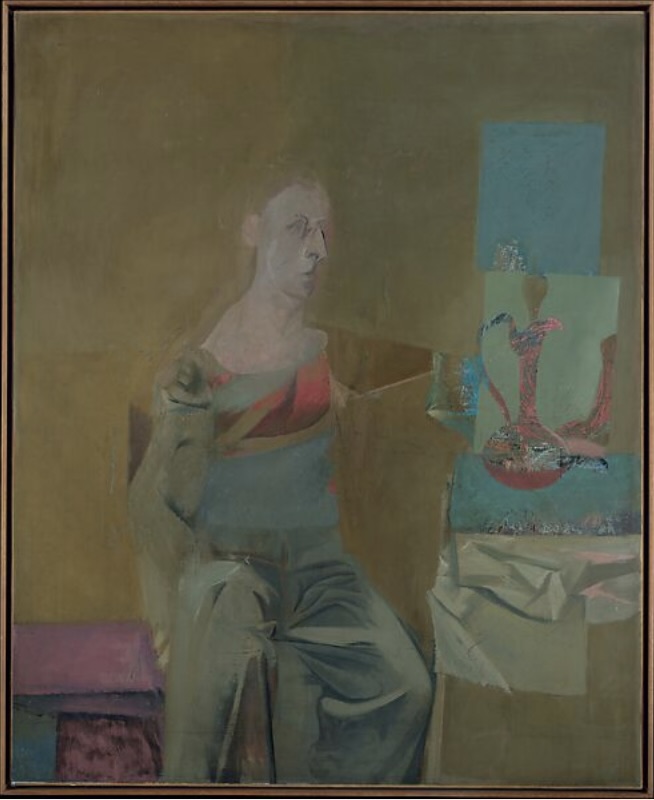
Ten Characteristics of Abstract Impressionism
There are many characteristics of the Abstract Impressionism art movement. Here are 10 of the more significant characteristics.
Emphasis on Color:
Abstract Impressionism is characterized by its bold and innovative use of color, often employing various hues to create mood and atmosphere.
Non-Representational Forms:
Artists in this movement avoided representational forms, using abstract shapes and lines to convey their ideas.
Spontaneity:
Works often display a sense of spontaneity and fluidity, reflecting the artist’s immediate emotional state or reaction.
Textural Variety:
Abstract Impressionism is characterized by the use of various textures, achieved through different brushwork techniques and media.
Focus on Light:
Like its predecessor, Impressionism, this movement pays significant attention to the effects of light, but in an abstract manner.
Personal Expression:
The movement emphasizes the artist’s personal vision and emotional response over traditional subject matter.
Dynamic Compositions:
Abstract Impressionist works often feature dynamic, non-linear compositions that guide the viewer’s eye across the canvas.
Subtlety and Nuance:
There is a focus on subtle gradations of color and form, creating a sense of depth and complexity.
Influence of Nature:
Many Abstract Impressionists drew inspiration from natural landscapes and phenomena, translating these into abstract forms.
Integration of Techniques:
Artists often combined techniques from other movements, such as the gestural brushstrokes of Abstract Expressionism and the color theories of the Impressionists.
Ten Important Works of Abstract Impressionism
Here are some of the most important artworks attributed to Abstract Impression.
“No. 5, 1948” by Jackson Pollock (1948)
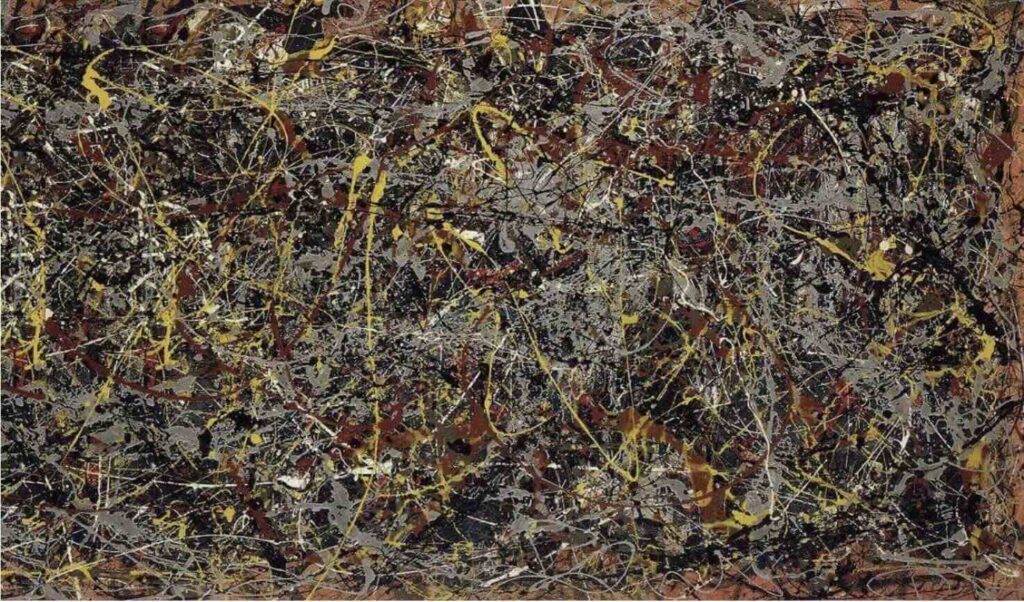
- Importance: A prime example of Pollock’s drip painting technique, this work exemplifies the spontaneity and dynamism of Abstract Impressionism.
“Elegy to the Spanish Republic No. 110” by Robert Motherwell (1971)

- Importance: Reflects Motherwell’s use of abstract forms to convey political and emotional themes, characteristic of Abstract Impressionism’s expressive power.
“White Center (Yellow, Pink, and Lavender on Rose)” by Mark Rothko (1950)

- Importance: Rothko’s use of large, soft-edged fields of color to evoke emotion aligns with the movement’s emphasis on color and mood.
“Mountains and Sea” by Helen Frankenthaler (1952)
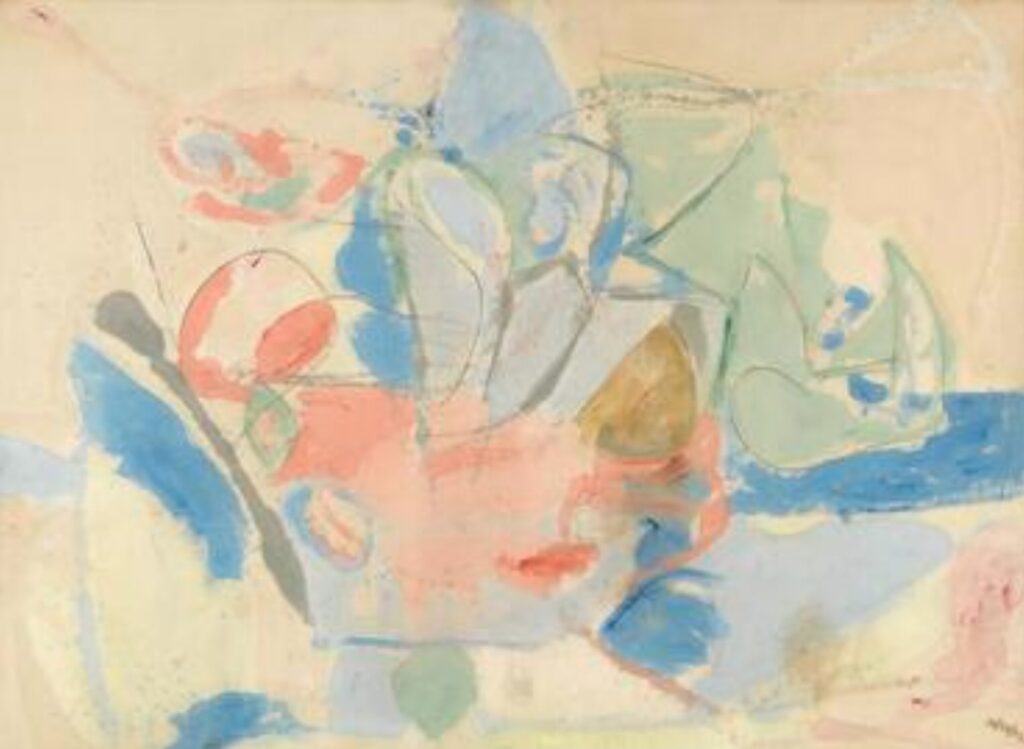
- Importance: Demonstrates Frankenthaler’s pioneering soak-stain technique, which influenced the color field branch of Abstract Impressionism.
“Blue Poles” by Jackson Pollock (1952)
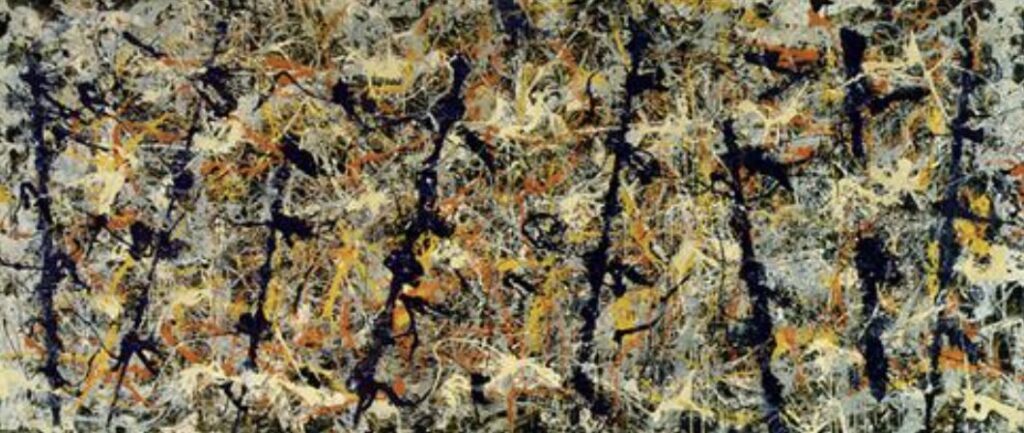
- Importance: Combines gestural abstraction with a structured composition, showcasing Pollock’s evolution within the movement.
“Leda and the Swan” by Cy Twombly (1962)

- Importance: Twombly’s scribbled, spontaneous lines and use of mythological themes highlight the movement’s abstract, expressive nature.
“Onement I” by Barnett Newman (1948)

- Importance: Newman’s use of “zips” or vertical lines within fields of color became a defining characteristic of his abstract work, emphasizing simplicity and emotional depth.
“The Bay” by Helen Frankenthaler (1963)

- Importance: An excellent example of her soak-stain technique, this work emphasizes fluidity and the interaction of color, central to Abstract Impressionism.
“Vir heroicus sublimis” by Barnett Newman (1950-1951)

- Importance: This painting represents Newman’s exploration of color fields and human emotions, aiming to evoke a sublime experience in the viewer.
“Yellow Band” by Morris Louis (1961)

- Importance: Louis’s use of poured paint to create veils of color exemplifies the movement’s focus on color interaction and abstract form.
Abstract Impressionism, emerging in the mid-20th century, played a crucial role in the evolution of modern art. Its emphasis on color, spontaneity, and personal expression marked a departure from traditional artistic forms, allowing for new explorations of emotion and atmosphere.
The characteristics and key works of this movement continue to influence contemporary art, demonstrating the enduring impact of Abstract Impressionism on the art world.
Listen To Our Podcast About
How Did Abstract Impressionism Redefine the Art World? Below or By clicking here.
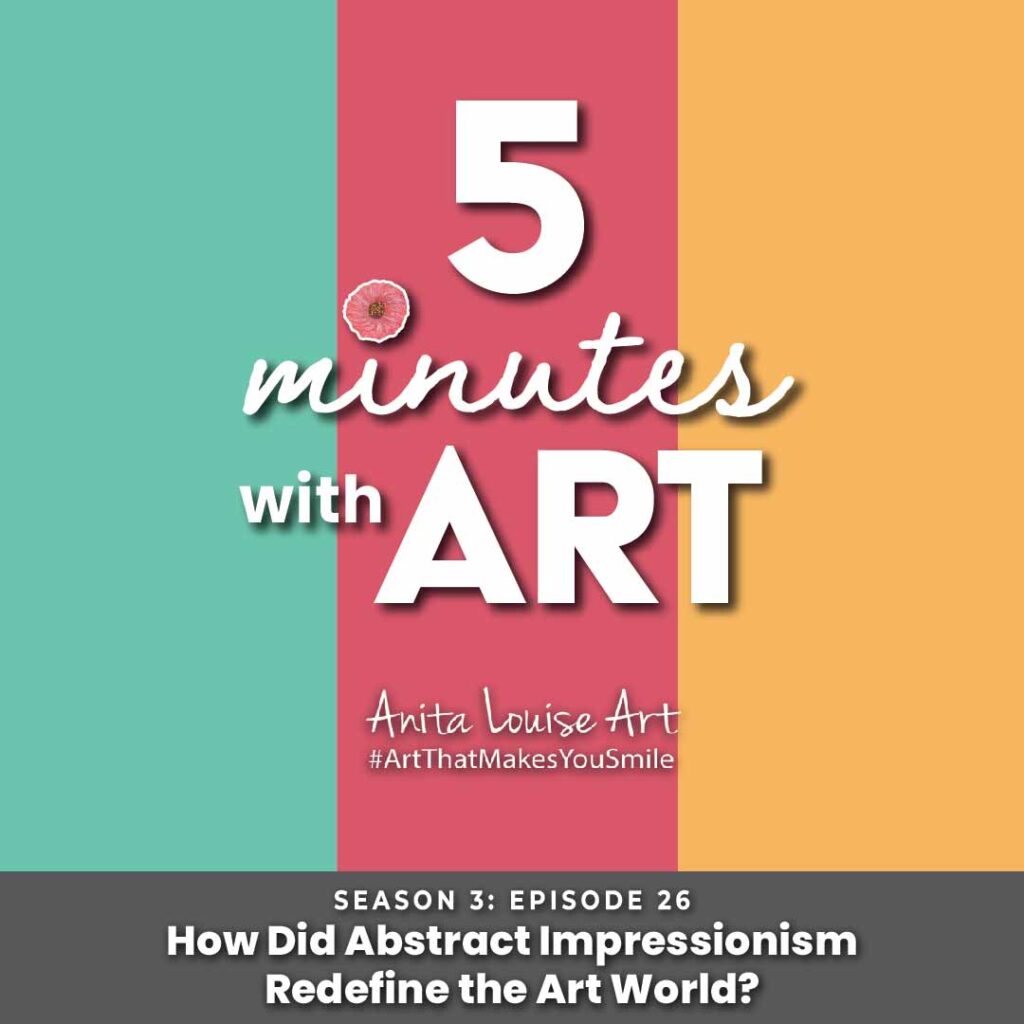
Anita Louise Art is dedicated to art education, great artists, and inspiring others to find and create their art. We love art that uplifts and inspires. #ArtToMakeYouSmile! #ArtToMakeYouHappy!
If you are interested to see any of my art, you can find out more by clicking here. If you are interested in what inspires me and my paintings, you can discover more by clicking here.
We have a free newsletter and would love you to be part of our community; you can subscribe to the newsletter by clicking here. If you have any questions, I would be happy to talk to you. You can reach me, Anita, by clicking here.
Subscribe to our Anita Louise Art YouTube Channel filled with great videos and information by clicking here.
Join us for our podcast “5 Minutes With Art.” Spend just 5 minutes a week with us to discover and learn about great art and artists. You can find out more about our podcast by clicking here.
Related Questions
How Do Art Museums Get Their Art? 4 Different Ways Explained
Museums obtain their works of art through a gift, bequest, loan, or artwork purchase. Museums need to acquire artwork through planning and following usually strict processes they have put in place. Whatever they receive, through even a gift, bequest, loan, or purchase, it has to make sense for the overall Museum’s collection.
By clicking here, you can learn more by reading How Do Art Museums Get Their Art? 4 Different Ways Explained.
How Do Museums Buy Art From Private Collectors?
The art museums will purchase art with an art council working together with the art museum curators to decide what should be bought and why this work of art should be bought. The curator will usually present to the council why the museum should acquire a specific work of art and how that artwork is essential to the museum’s success. As purchasing art costs money, many museums prefer to acquire art through gifts or bequests and only buy what they know will add to a collection or overall museum success.
By clicking here, you can learn more by reading How Do Museums Buy Art From Private Collectors?
The Important Role Of Art Museums In The Art World
An art museum will help to collect and preserve works of art. They also interpret the art and help to educate us all about art. Many art museums will have programs that will allow you to even experiment with different types of art. The core role of an art museum is to inspire us about art.
By clicking here, you can learn more by reading The Important Role Of Art Museums In The Art World.

